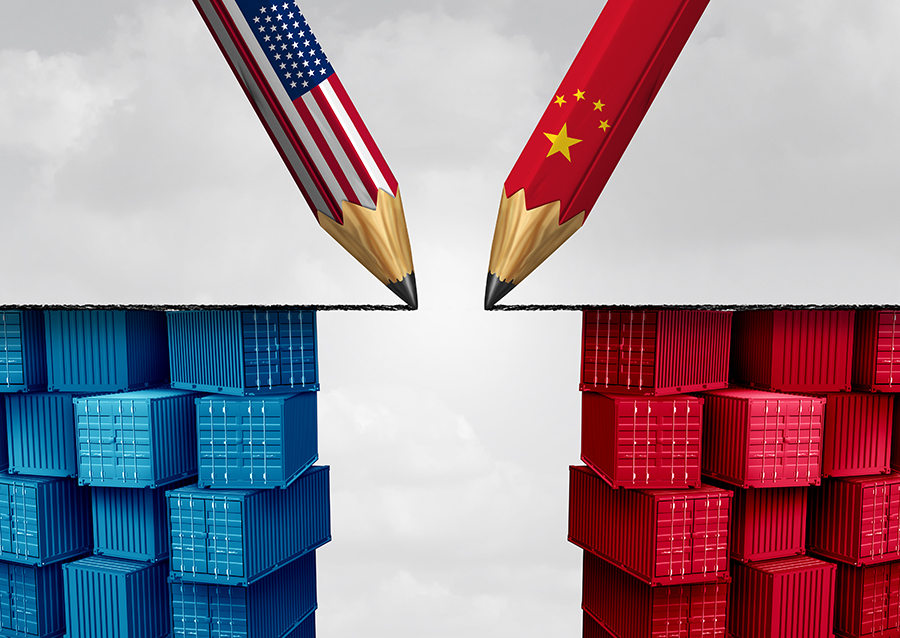
The phase one trade deal China and the United States reached on Dec. 13 cooled their protracted trade war. It seems to be a victory for both sides, if only because the deal has largely ended the continued threat of escalation. It has had a major impact on the Chinese and U.S. economies, and even on the global economy.
However, inconsistencies in the words and expressions used in the statements of each side also indicate they have not reached consensus on deeper structural issues, and uncertainty still hangs over the prospects of Sino-U.S. relations.
From the information that has been confirmed so far, each side made certain concessions to the other to reach the phase one trade deal. For example, China agreed to purchase more agricultural products from the United States and allowed U.S. banks and credit cards to expand into the Chinese market. The U.S. agreed not to proceed with 15 percent tariffs on $156 billion worth of consumer goods scheduled to take effect on Dec. 15, and will reduce the Sept. 1 tariffs on $120 billion of Chinese goods — halving it from 15 to 7.5 percent. However, the 25 percent tariffs on $250 billion of Chinese imports will remain. China, for its part, suspended retaliatory tariffs that were also scheduled for Dec. 15, including the 25 percent tariffs on U.S. cars and auto parts. This reflects the shared desire of both sides to ease trade disputes and scale down the trade war.
To this end, China and the United States each issued two documents — “China’s Statement on Phase One Trade Deal between China and the United States” and the “Agreement Between the United States of America and the People’s Republic of China Fact Sheet.” According to the statements, the deal has nine chapters — preface, intellectual property, technology transfer, agriculture, financial services, currency, expanding trade, dispute resolution, and final clauses. A closer look at the documents reveals major differences in wording and priorities between China and the United States:
Reducing tariffs
The main difference is how the U.S. will “phase out its additional tariffs on Chinese products.” The United States has always wanted to use the tariff chip as part of the implementation mechanism of the deal. U.S. tariff exemptions are a key part of what China wants to achieve. The two sides were close to reaching an agreement in May to eliminate all mutual retaliatory tariffs over time.
Expanding trade
The differences between China and the United States are mainly reflected in specific amounts. The American side referred to “commitments from China to import various U.S. goods and services over the next two years in a total amount that exceeds China’s annual level of imports for those goods and services in 2017 by no less than $200 billion. China’s commitments cover a variety of U.S. manufactured goods, food, agricultural and seafood products, energy products and services.”
The Chinese side, however, stated that “the specific content and data will be released in the future” and stressed that it will “follow the WTO rules and the principles of marketization and commercialization and increase imports from countries including the United States of quality and competitive goods and services.” The Chinese statement did not mention specific amounts.
Chinese officials have emphasized only that, in addition to agricultural products, China will expand its imports of energy, manufactured goods and services from the United States as needed in accordance with the principles of marketization and WTO rules. In the China-U.S. trade negotiations, the U.S. trade deficit with China has always been a key target variable.
Many international voices doubt the purchase figures specified in the phase one agreement on grounds that the U.S. purchase requirement is unfair and threatens to distort the global market, and that China’s actual purchasing capacity is so limited that it can’t afford huge purchases.
Dispute resolution
The U.S. stated that the United States and China have reached a historic and enforceable agreement on a phase one trade deal and established a strong dispute resolution system that ensures prompt and effective implementation and enforcement. According to U.S. media reports, the U.S. has included a snapback clause in the phase one deal requiring that if China’s quarterly U.S. agricultural product imports are less than 10 percent of what is required by the agreement, the U.S. tariffs against China will return to previous levels. China, however, claims that “negotiations on the phase two deal will depend on the implementation of the phase one agreement.”
Timing for phase two
U.S. President Trump tweeted: “We will begin negotiations on the phase two deal immediately, rather than waiting until after the 2020 election.” China did not mention specific timing but stated that the current priority is to sign the phase one agreement and implement it effectively. China thinks that it’s up to the two sides’ working groups to decide when follow-up negotiations will start.
By comparison, Trump’s statement shows that he is in a hurry and wants to ease the pressure from the impeachment and secure political chips to be used in the 2020 election.
These inconsistencies in expressions and wording pose dangers for the future. The differences and potential confrontations between China and the United States remain long-term and serious. At present, the resolution of issues such as how the phase one agreement will be implemented and evaluated, as well as how to get going on negotiations for a phase two agreement, are highly uncertain.
God knows whether China and the United States can truly reach a trade agreement in 2020. Trump’s political pressure will subside if he wins the election, but it’s unknown whether that will escalate the Sino-U.S. trade war again.
I am not very optimistic about the world returning to normal order. The WTO appellate body essentially stopped functioning, which sends a strong signal.
